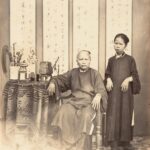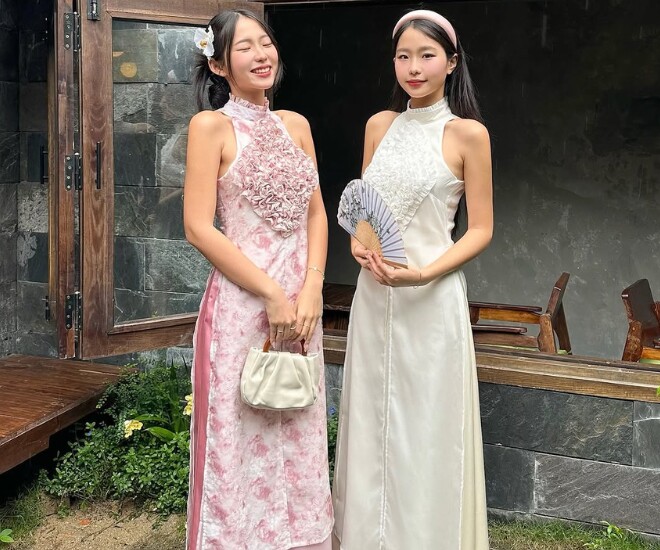
This Tet holiday, alongside the traditional ao dai that carries the essence of Vietnamese culture, modern variations of the outfit have emerged with creative twists, offering a fresh take on festive fashion. Among these new designs, off-the-shoulder and sleeveless ao dai are becoming increasingly popular among women.
Why are off-the-shoulder ao dai gaining popularity?
The off-the-shoulder ao dai is a modern twist on the traditional Vietnamese garment, featuring bold cuts, especially around the shoulders, which are either completely exposed or lowered to showcase the wearer’s delicate collarbones and alluring shoulders. This unique blend of traditional aesthetics and contemporary style lends the wearer an enchanting yet elegant appearance.
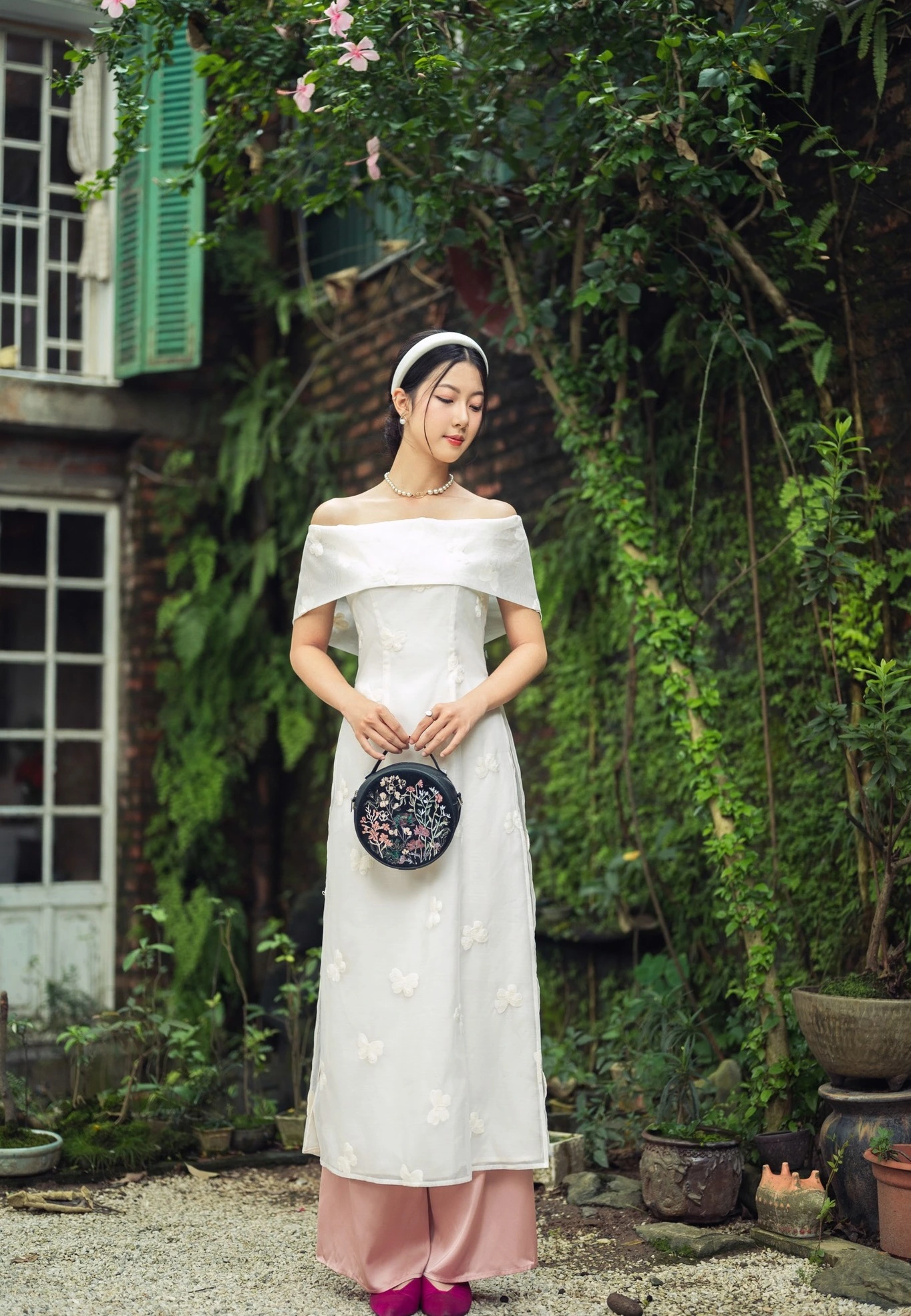
These off-the-shoulder and sleeveless designs not only accentuate the beauty of the female form but also boost the confidence of the wearer.
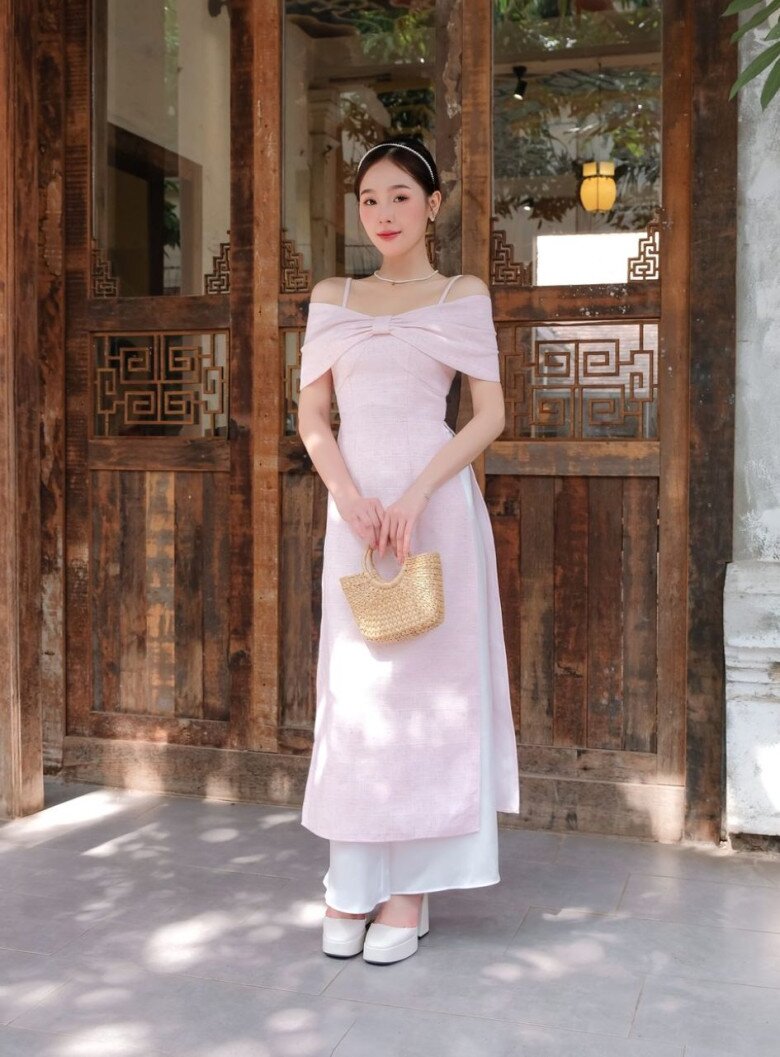
The graceful off-the-shoulder cut skillfully showcases the slender collarbones and graceful shoulders, exuding a captivating allure.
On the other hand, sleeveless ao dai are perfect for those who favor a classic and refined look. While seemingly simple, the absence of sleeves creates a distinctive look, making the wearer appear taller, slimmer, and more graceful.
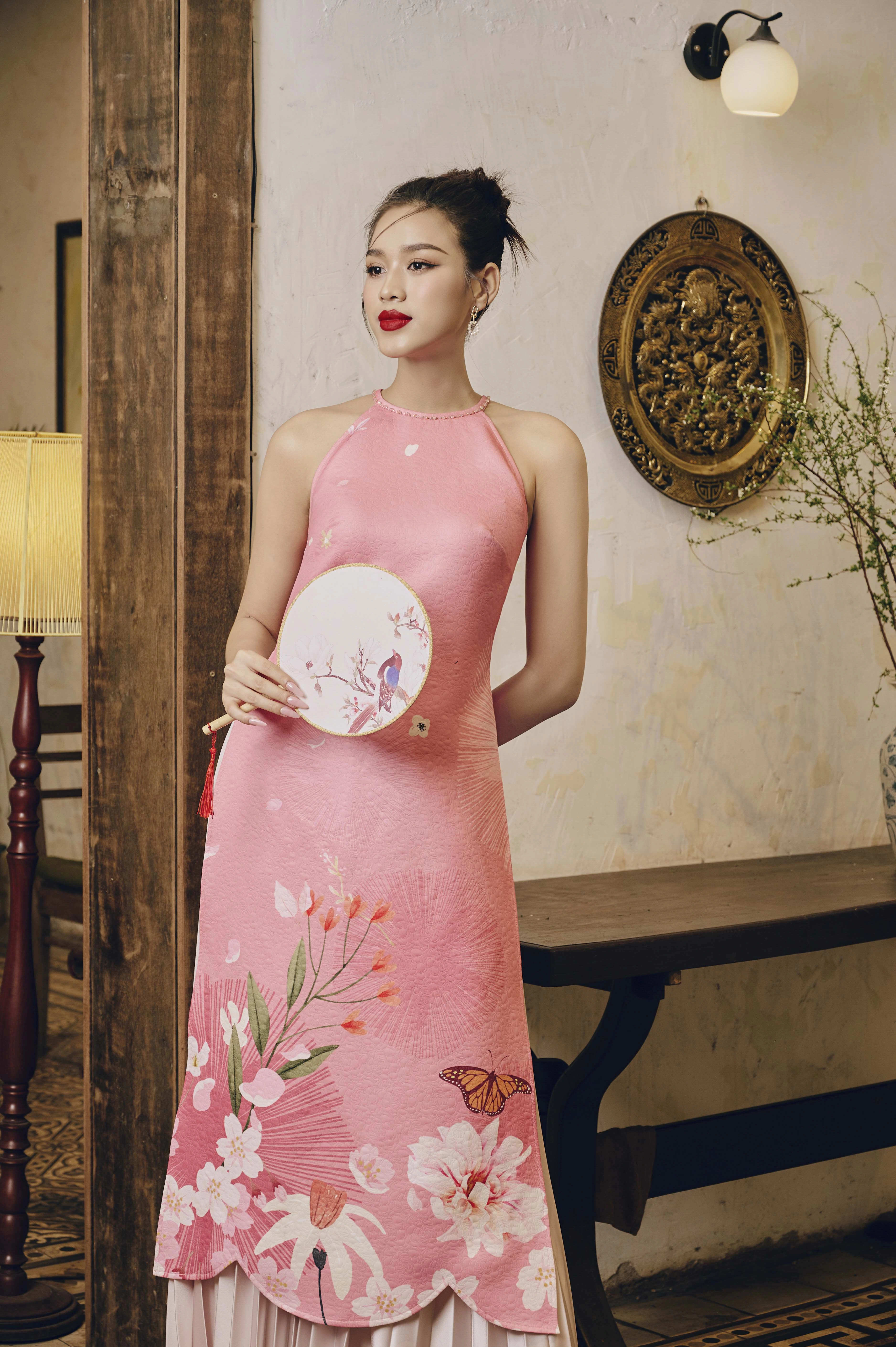
This style is particularly well-suited for those who appreciate traditional aesthetics while seeking a touch of modernity.
Enchanting off-the-shoulder ao dai styles for women this Tet
1. Yem-neck ao dai
The yem-neck ao dai has long been a symbol of the fusion between tradition and modernity, exuding both classic and refined elegance. This style stands out with its snug-fitting yem collar, gracefully accentuating the slender neck, delicate shoulders, and slender back.
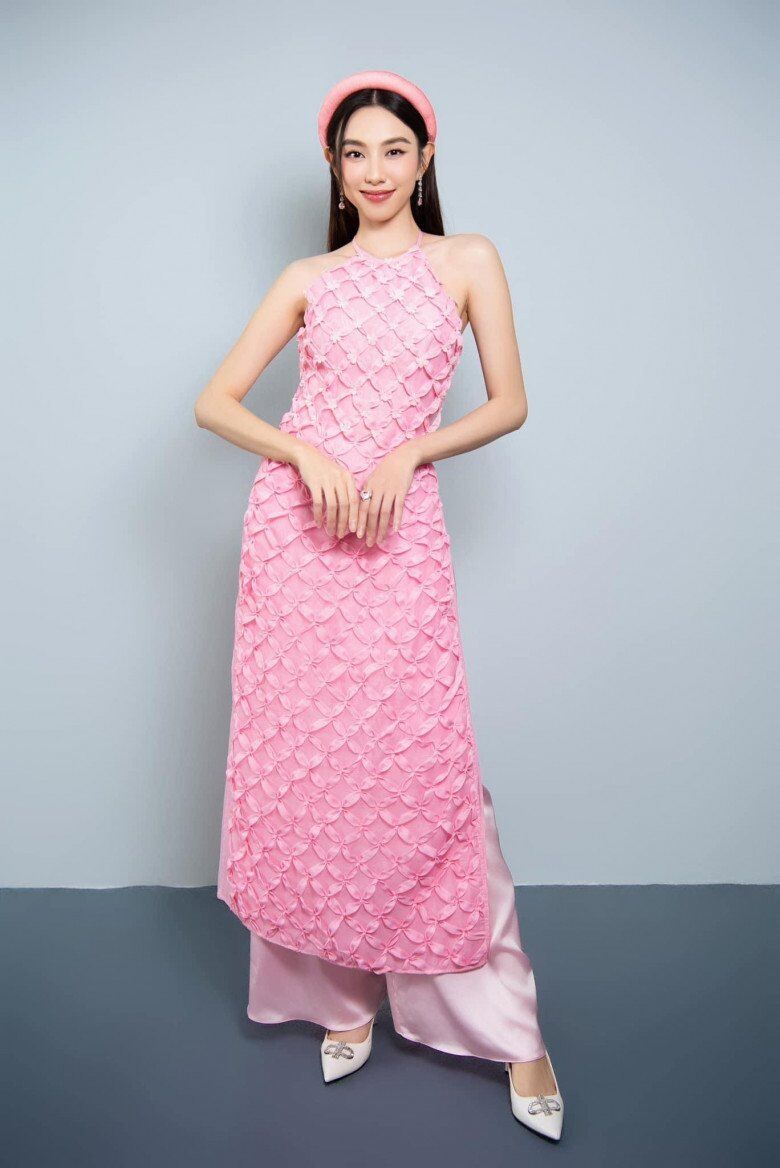
Crafted with meticulous stitching, the yem-neck ao dai elegantly highlights the wearer’s innate femininity and grace while imparting a sense of softness and fluidity.
The versatility of the yem-neck ao dai lies in its ability to accommodate various fabrics and patterns. Yem-neck ao dai crafted from luxurious silk, sleek satin, or intricately embroidered lace exude sophistication and nobility. Additionally, this style complements diverse fashion preferences, ranging from gentle and feminine to bold and contemporary.
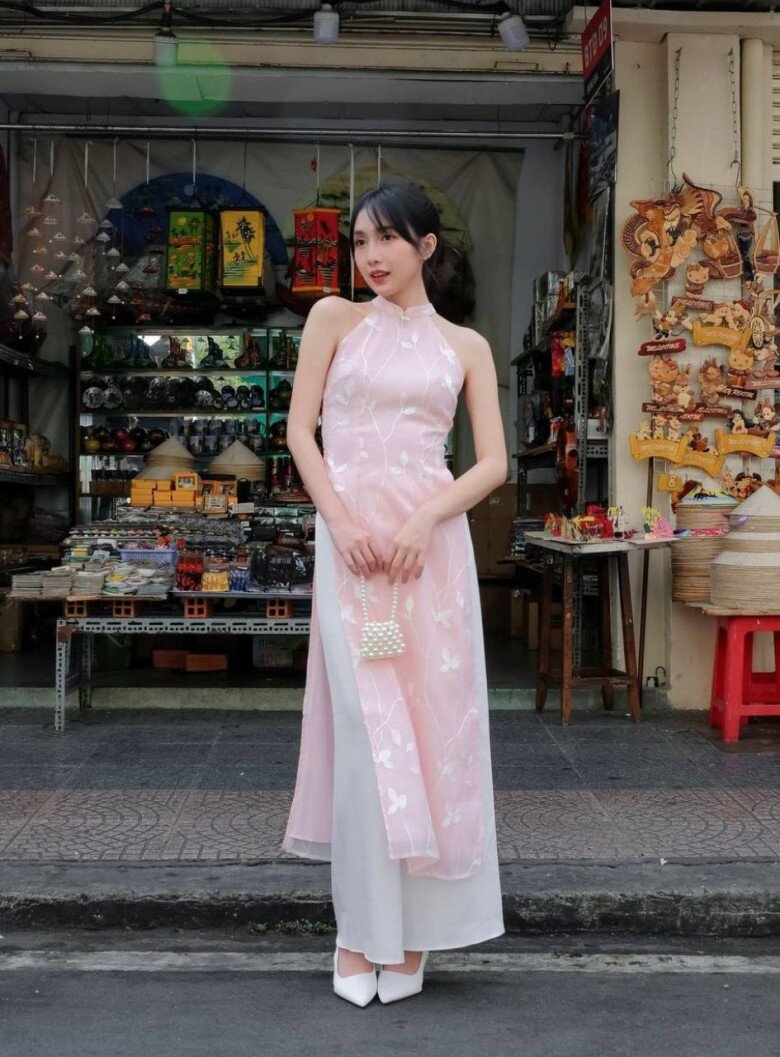
The yem-neck ao dai seamlessly blends tradition with captivating modernity, earning the admiration of women who favor a delicate yet vibrant aesthetic.
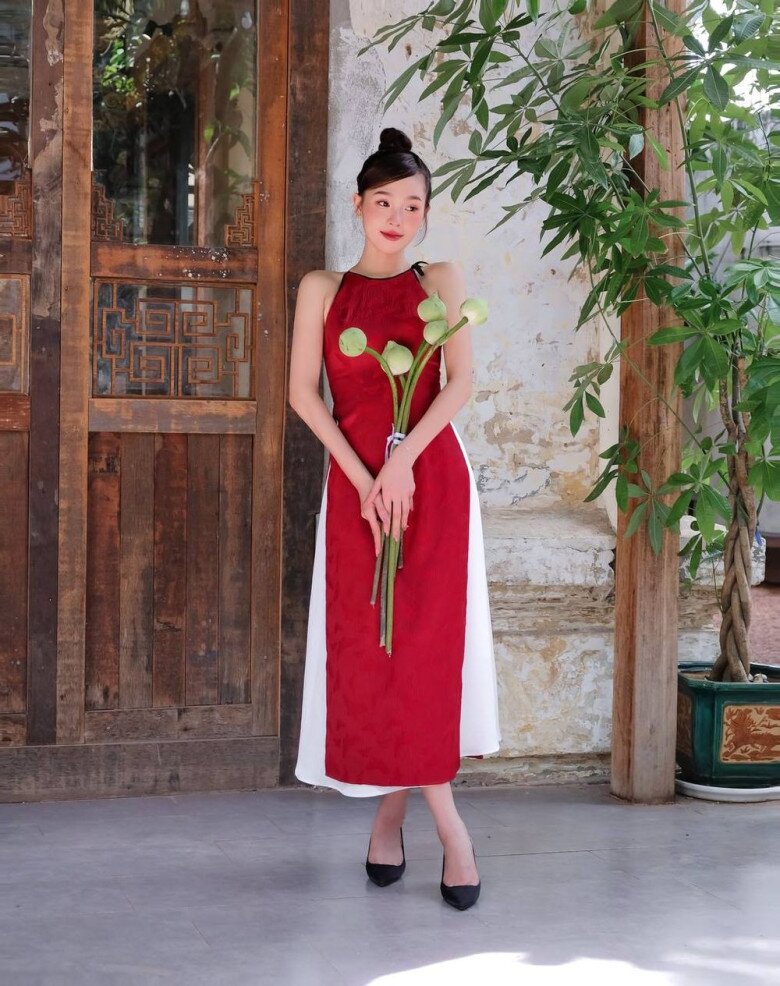
Furthermore, the yem-neck design pays homage to Vietnamese culture, evoking the graceful image of women in traditional attire. This is why the yem-neck ao dai holds a special place in the hearts of fashion enthusiasts.
2. Asymmetrical off-the-shoulder ao dai
The asymmetrical off-the-shoulder style is one of the most beloved variations, seamlessly blending allure with elegance and refinement. The subtle exposure of the shoulder gracefully showcases the soft, bare skin while creating a unique focal point, lending the wearer a contemporary and captivating appeal.

This style is ideal for those who embrace fashion experimentation while retaining the inherent grace of traditional ao dai.
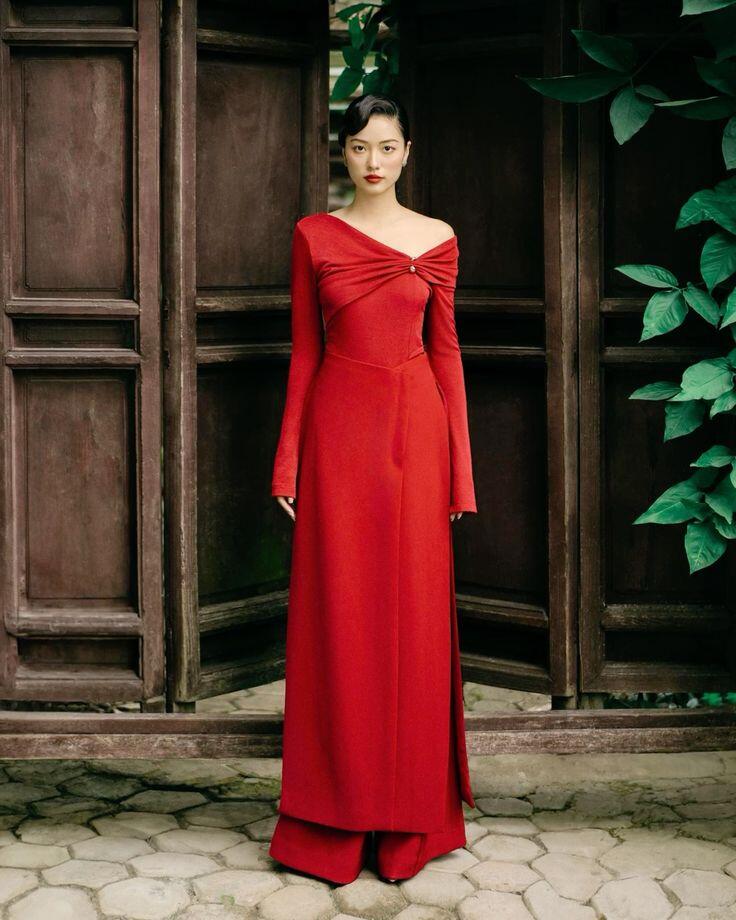
The asymmetrical off-the-shoulder design imparts a gentle yet alluring vibe, akin to a soothing yet captivating wave.
3. Bare-shoulder ao dai
The bare-shoulder ao dai embodies a bold, contemporary aesthetic while retaining the inherent grace of traditional attire. This style forgoes the shoulder straps entirely, revealing seductive collarbones and graceful shoulders, creating an enchanting look without being overly revealing.
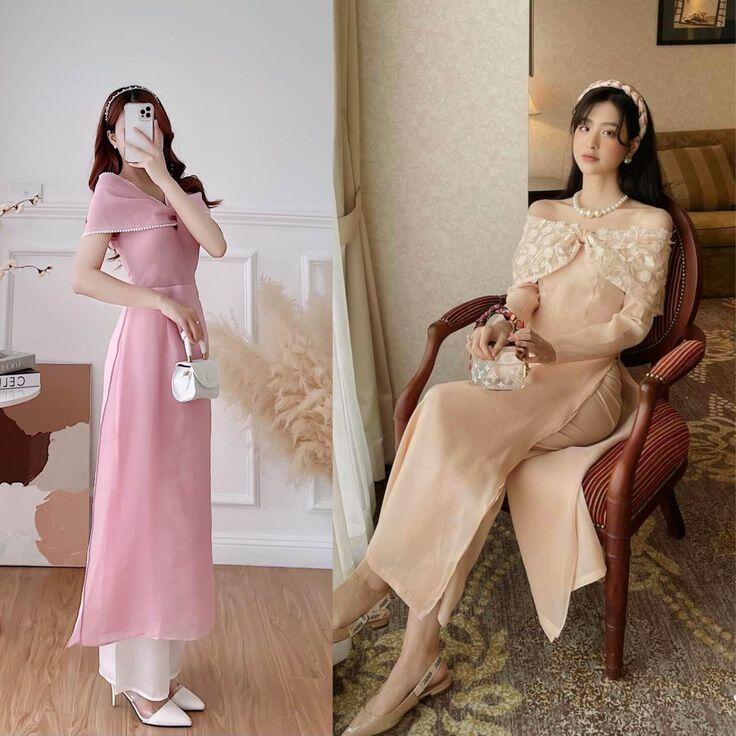
This style is ideal for those who relish standing out while maintaining a sense of subtlety and refinement.
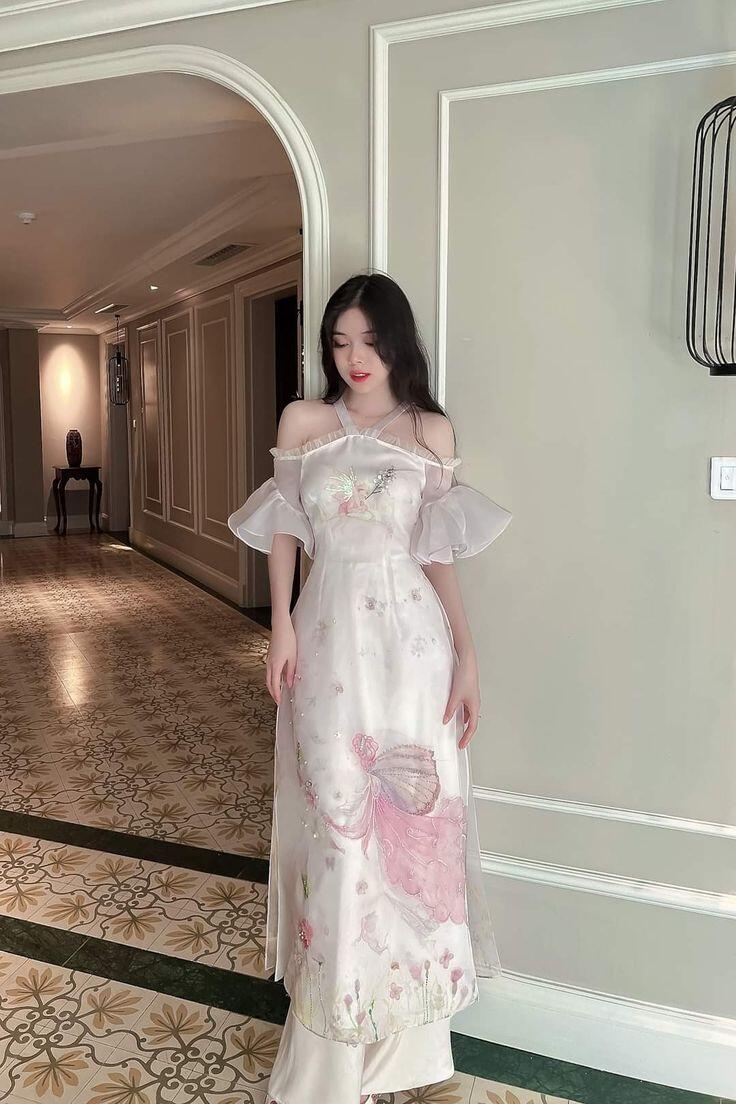
Bare-shoulder ao dai are often crafted from lightweight fabrics such as soft chiffon, luxurious silk, or delicate lace, imparting an ethereal and feminine aura.
Bare-shoulder ao dai elegantly showcase slender collarbones and graceful shoulders, exuding femininity and allure without being overly ostentatious.
The Evolution of the Ao Dai in Ho Chi Minh City: A Century of Transformation
The once humble ‘ao ngu than’, a traditional Vietnamese five-piece garment from the 1860s, has evolved into the elegant and sophisticated ‘ao dai’ of today. With intricate tailoring, a range of luxurious fabrics, and exquisite craftsmanship, the modern ‘ao dai’ is a testament to the evolution of Vietnamese fashion.






























